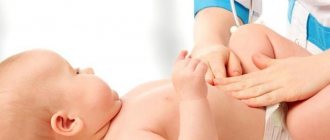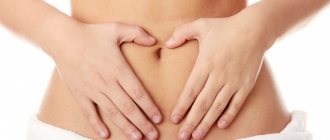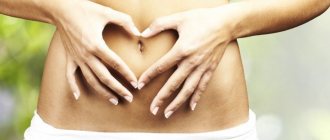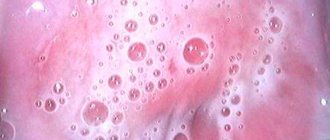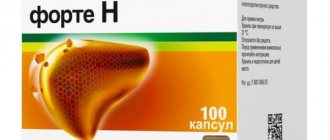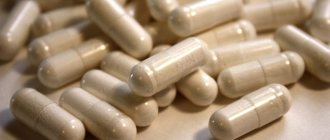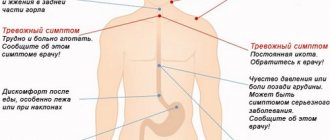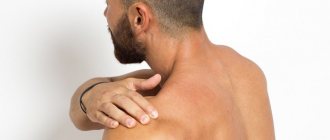It is difficult to find an adult who is not familiar with antibiotics. Often such medications are prescribed to children, for example, in the treatment of sore throat or otitis media. Most people know that taking antibiotics can lead to the development of dysbiosis. Disruption of the normal intestinal microbiota after taking antibacterial drugs is a common side effect of such drugs. Sometimes this condition goes away on its own, but in some situations it requires targeted correction.
What antibiotics cause dysbiosis?
- Any antibiotic, no matter how many days it is used, can cause dysbiosis. But there are some groups of medications that have a higher risk:
- tetracyclines;
- aminoglycosides;
- fungicides;
- aminopenicillins.
It is no coincidence that tetracycline antibiotics are in first place on the list of the most dangerous in terms of the occurrence of dysbiosis. These drugs aggressively attack the intestinal mucosa and damage it. As for aminoglycosides, unlike tetracyclines, they do not damage the mucosa. But why are they dangerous? These antibiotics stop, and sometimes even stop, the growth and reproduction of beneficial bacteria.
As a result, the number of opportunistic microorganisms increases significantly.
Even small doses of fungicidal agents cause a sharp increase in the number of Proteus bacteria and lactose-negative Escherichia. And finally, aminopenicillins create ideal conditions for the active proliferation of staphylococcal and streptococcal infections. Their use can even lead to dysbacteriosis with fever and bleeding.
Antibiotics of the tetracycline group most often cause dysbiosis.
Medical therapy
Special studies will help to recognize dysbiosis, which include:
- stool culture;
- breath test;
- coprogram;
- bacteriological examination of aspiration of intestinal contents, as well as biopsy material.
Treatment of this pathology is carried out comprehensively. Several main directions are used for this. The purpose of treatment: to normalize the immune system and gastrointestinal tract activity, restore the intestinal or vaginal microflora.
Currently, there are many drugs for dysbiosis designed to restore microflora. These include:
Prebiotics
These products are not digested in the intestines, as they form the basis for the development and growth of beneficial microflora. Prebiotics include: inulin, galactose, fructose isomers, lactulose, oligosaccharides. These components are found in corn, wheat, garlic, chicory, onions, and dairy products. As for medications, the most effective are: Prebio, Duphalac, Lactusan, Normaza.
Probiotics
Such medical preparations contain live bacterial cultures. They do not colonize the intestines to restore beneficial microflora. The main task of probiotics is to suppress the active proliferation of harmful bacteria. Thus, the drugs participate in restoring intestinal balance. The duration of the treatment course is 30–40 days. Drugs that provide good results: Colibacterin, Lactobacterin, Bifidumbacterin.
Agents that suppress the development of pathogenic microflora
These medications contain special bacteria that can neutralize the activity of harmful microorganisms. These include: Enterol, Bactisubtil, Bactisporin. Duration of therapy is 1.5 months.
Symbiotics
The preparations contain a complex of important beneficial bacterial microorganisms. The most famous symbiotics: Bifikol, Linex, and Bifiform. Duration of treatment – 2 weeks.
Synbiotics
Medicines in this group consist of important prebiotics and beneficial bacteria that are necessary for the development of proper microflora. Effective agents: Bifido-bak, Maltodophilus, Laminolact. The treatment course is 21 days.
Combined products
Such drugs consist of important immunomodulators, bacteria. Acipol and Bifiliz are considered the most effective. The duration of treatment is two weeks.
Antiseptics
In case of complications of the disease, special medications will be needed that can suppress the development and reproduction of harmful microorganisms. The use of Ersefuril, Enterofuril for a week at a dose of 200 mg 4 times a day is indicated. Intetrix is taken for 5 days, 2 capsules in 3 doses per day.
Vitamins
In most cases, dysbiosis provokes hypovitaminosis, so it is recommended to take Decamevit, Multitabs and other vitamin complexes.
In addition to taking medications, a special diet will be required to restore the microflora. The diet should contain cereals, bran, fermented milk products, fresh fruits and vegetables, and berries. Try to minimize the consumption of sweets, baked goods, strong coffee and tea, spices, fatty and spicy foods, soda and alcohol.
Treatment with antibiotics helps eliminate beneficial microflora. To avoid the development of dysbiosis, you must immediately start taking medications that can protect beneficial microorganisms. In order for antibiotic treatment to be successful and proceed without complications, it is necessary to strictly adhere to the recommendations of the attending physician.
Characteristic manifestations in adults
The first and second stages of the pathological process are not characterized by the appearance of any signs. Symptoms of dysbacteriosis appear only from the third degree. Let's consider the characteristic clinical symptoms of dysbiosis:
- persistent diarrhea or constipation;
- painful bloating;
- itching of the anorectal area;
- in rare cases, blood and mucus appear in the stool;
- fever;
- dehydration;
- bad breath;
- rash on the face and hands;
- nausea and vomiting;
- false urge to defecate;
- belching;
- intestinal cramps;
- allergic reaction;
- intoxication of the body in the form of headaches, sleep disturbances, fatigue, increased body temperature;
- dry skin, brittle nails, hair loss, catches in the corners of the mouth, stomatitis - all this indicates a lack of nutrients in the body.
With dysbacteriosis, persistent diarrhea appears after antibiotics
How long does dysbiosis last after antibiotic therapy? If the acute onset of the disease is accompanied by severe pain, fever, and blood in the stool, then this usually indicates the third or even fourth stage of dysbiosis. In this case, the disease without adequate medical therapy can drag on for a month or even more. In rare cases, the first and second stages last about two weeks and may result in recovery without treatment.
Important! Self-treatment of dysbiosis can lead to disability or even death.
Separately, it is worth noting some of the consequences that a course of antibacterial therapy can lead to. Patients often develop stomatitis, an infectious and inflammatory disease of the oral cavity that causes swelling and redness of the oral mucosa, as well as the formation of wounds. To eliminate inflammation, patients are prescribed antiseptic rinses and probiotics.
During the treatment period, it is extremely important to adhere to a dietary diet, which includes avoiding spicy, salty, and sweet foods. According to research, in fifty percent of cases of intestinal dysbiosis, patients develop thrush.
In women, it manifests itself in the form of vaginal candidiasis, which is characterized by the appearance of cheesy vaginal discharge with an unpleasant odor, as well as itching and burning of the genitals. Another complication is a sharp weakening of the immune system. Allergies affect the body's own cells. As a result, the number of colds and ARVIs increases sharply.
Intestinal dysbiosis leads to further weakening of the immune system
Symptoms
Clinical signs of pathology do not always appear with the same expressiveness. In some cases, the disease occurs in a mild form and is accompanied by mild discomfort in the stomach, bloating and periodic seething in it.
In a complicated course, the following symptoms are observed:
- prolonged diarrhea, less often – constipation;
- frequent urge to have a bowel movement that is not accompanied by bowel movements;
- foul odor from stool;
- itching in the anal area;
- belching, vomiting;
- nausea;
- increased gas formation, bloating;
- painful spasms;
- white tongue
In rare cases, there may be mucous and bloody discharge in the feces.
Similar manifestations are characteristic of other diseases of the digestive system. Therefore, to make an accurate diagnosis, it is necessary to undergo an examination.
Dysbiosis in children
The use of antibiotics in the treatment of children is a necessary measure. But you should resort to their use only after a doctor’s prescription. With dysbacteriosis from antibiotics, children experience abdominal discomfort, bloating and flatulence. The food is not completely digested, so the remaining pieces begin to rot.
Then they are either rapidly excreted and this manifests itself in the form of diarrhea, or they become denser, causing constipation. Any development of events is dangerous for the baby. In the first case, this threatens with dehydration, and in the second, with poisoning of the body, since toxins from the intestines are absorbed into the blood.
Due to the lack of beneficial bacteria that are responsible for breaking down food, proteins are absorbed into the bloodstream almost unchanged. This provokes the development of an allergic reaction, since the baby’s body perceives them as a foreign object and begins to actively fight it. Clinically, this may manifest as a rash.
Treating children with antibiotics can have the following consequences:
- stomatitis. This is an inflammation of the oral cavity. The child begins to be capricious and eats poorly;
- thrush. In childhood, candidiasis affects the oral cavity. In teenage girls, thrush can manifest itself as a cheesy vaginal discharge and itching of the vulva;
- an allergic reaction that occurs due to undigested protein;
- weakened immunity, which causes the child to often get colds;
- vitamin deficiency, which threatens to slow down the growth and development of the baby.
Normoflorin
There are several varieties of such dietary supplements, slightly different in composition. The product contains:
- cultures of bifidobacteria;
- metabolites of bifidobacteria;
- vitamins;
- microelements;
- prebiotic.
Taking Normoflorin helps restore optimal intestinal microbiota. The drug is capable of:
- participate in the metabolism and absorption of proteins, fats and carbohydrates;
- restore cholesterol and bilirubin metabolism;
- optimize the absorption of calcium and iron salts, as well as vitamins;
- normalize the production of B vitamins;
- prevent endotoxin poisoning;
- stimulate the synthesis of interferons, etc.
Normoflorin is intended for internal use. It is produced in the form of drops, which should be diluted in food liquid in a ratio of 1:3. Afterwards, you should drink the medicine immediately. The reception must be repeated 1-2 times. in a day.
The standard dosage for adults is 2-3 tbsp. l. Children's dosage is agreed with the doctor. The duration of therapy is from 14 to 30 days.
Normoflorin is recommended to be taken from the first days of using antibiotics. In such a situation, the drug will help prevent dysbiosis.
How to treat?
In order to reduce the side effects of antibiotics, you should take responsibility for your health. If you feel unwell, you should not self-medicate; you should seek qualified help from a specialist and follow his recommendations. The doctor will be able to make a diagnosis and create the correct treatment regimen.
Important! Do not take antibiotics for viral infections.
Antibacterial agents are divided into certain groups, each of which acts on a specific type of infectious agent. Of course, the easiest way is to take an antibiotic with a broad spectrum of action, but such drugs are detrimental to microflora and are used in exceptional cases.
Moreover, the dose and duration of the treatment process are purely individual, and the instructions provided by the manufacturer are general recommendations. You cannot stop treatment and shorten the treatment course on your own; this is fraught with the development of complications and mutation of pathogens.
Treatment of dysbiosis after antibiotics should be prescribed by a qualified specialist
Medications
Restoring intestinal microflora after antibiotics includes proper nutrition and giving up bad habits. A gastroenterologist will help you create an individual recovery program. Properly selected foods help improve metabolism.
It is important for people who have completed a course of antibiotic therapy to adhere to the following rules:
Treatment of dysbiosis with home remedies
- refusal of fatty, fried foods, smoked foods, marinades, etc.;
- for constipation, enrich the diet with foods that have a laxative effect: beets, prunes, fruits, oatmeal;
- temporarily exclude legumes, bread, white cabbage;
- eat boiled vegetables;
- broth cooked with bones will help restore the functional activity of the liver;
- Fermented milk products will help increase the number of beneficial bacteria in the intestines.
Tobacco smoke harms the gastric mucosa, and abuse aggravates the patient’s condition and delays the regeneration process.
Treatment of dysbiosis after taking antibiotics takes place in several stages. First of all, it is necessary to eliminate the contamination of the intestines with pathogenic microorganisms. If the cause of dysbiosis is a specific antibacterial agent, then it must be replaced. Antiseptic agents will help neutralize pathogenic microflora and stimulate the growth of beneficial bacteria.
An important role in the treatment process is played by the restoration of digestive processes. Digestive enzymes can help with this purpose. And of course, it is impossible to treat dysbiosis after antibiotics without probiotics and prebiotics. What is the difference between these two groups of drugs?
First, let's talk about probiotics. These drugs contain living organisms that normally inhabit the human intestines. Probiotics are the best remedy in the fight against dysbiosis; they can be taken already during antibiotic therapy, as well as after it. In especially severe cases, when dysbiosis takes a protracted form, patients may be prescribed probiotics, which include E. coli.
Preparations with bifidobacteria are widely popular. They are even prescribed for the treatment of children. And probiotics with lactobacilli are usually prescribed if it is not possible to cancel the course of antibiotic therapy. This is due to the fact that they are highly resistant to antibiotics.
Very often, doctors prescribe Linex to patients with dysbiosis. It consists of microorganisms that are normally present in different parts of the intestine. Another well-known probiotic is Rioflora. The drug inhibits the active reproduction of pathogenic microorganisms, activates the immune system and at the same time maintains the balance of healthy microflora.
Linex is a well-known probiotic that helps restore intestinal microflora
Prebiotics have a slightly different mechanism of action. They contain food components, the fermentation of which occurs in the lower intestines. Thanks to this, reproduction is stimulated and beneficial bacteria are ensured. A representative of prebiotics is Hilak-forte. It is a concentrate of metabolic products of beneficial microflora. The course of treatment is one month.
Features of microflora and its functions
Microflora is a special collection of microorganisms that take an active part in the life of the human body. The totality of these microorganisms amounts to half a thousand important bacteria weighing up to 4 kilograms. About 2/3 of the beneficial microflora is located on the inner surface of the intestinal walls, the remaining part covers the genitourinary system and skin.
Microflora performs the following important functions in the human body:
- produces hormones and vitamins;
- regulates gas formation in the intestines;
- ensures the absorption of calcium, iron, vitamins;
- stimulates the immune system to fight pathogenic viruses and bacteria;
- cleanses the human body and intestines of toxic substances;
- performs regulation and control of water and electrolyte balance.
However, when exposed to antibiotics, a serious problem in the functioning of the microflora, namely dysbacteriosis, can occur.
Antibiotics kill harmful bacteria that provoke inflammatory processes and intoxication, namely:
- pneumococci;
- gonococci;
- streptococci;
- staphylococci and others.
It is impossible to cure such infections without the use of antibiotics. An important disadvantage of this treatment is that antibiotics do not act selectively, so they kill not only harmful, but also beneficial microorganisms that live in the human body. Dysbacteriosis requires a fairly long treatment course, which is 25-35 days. To determine the presence of this pathology, you need to know what signs it manifests itself.
Folk remedies
You can also get rid of dysbiosis using alternative medicine recipes. Herbal remedies will help restore intestinal function. Let's look at some recipes. To prepare the medicinal mixture, take the following ingredients:
- chaga mushroom;
- oregano;
- tansy;
- coltsfoot leaves.
Dry raw materials are poured with boiling water and allowed to brew for 24 hours. The strained product must be taken internally. To enhance the effect, it is better to combine herbal teas with the consumption of fermented milk products. First, you can drink a glass of kefir and after two hours a glass of tincture.
So, dysbiosis after taking antibiotics is a common phenomenon due to the fact that these drugs suppress both pathogenic microflora and beneficial bacteria. In order to reduce the likelihood of dysbiosis, it is necessary to adhere to the doctor’s recommendations during treatment. The dosage of the antibiotic, the frequency of its use and the duration of the treatment process are determined by a qualified specialist.
We restore using cheap folk remedies
During the treatment period, along with antibacterial agents, probiotics are prescribed, which stimulate the vital activity of beneficial microflora and at the same time suppress pathogens. Medicines, diet food, as well as folk recipes will help restore intestinal function. An integrated approach will help the body quickly return to normal.
Forecasts
Without proper treatment, dysbiosis can last from two weeks to a month. However, spontaneous healing occurs very rarely.
Most likely, in the absence of a treatment course, complications will occur that can result in death. A prolonged course of the disease without taking appropriate measures is especially dangerous for children and elderly patients.
Timely seeking medical help is a guarantee of effective resistance to the disease. Following all the specialist’s recommendations relieves the disease and prevents the risk of developing dangerous pathological processes.
Dysbacteriosis is characterized by an imbalance in the microbial balance in the intestines. Various factors can cause the symptom complex. In most cases, dysbiosis develops from antibiotics. How does the disease manifest itself and is it possible to avoid its occurrence with antimicrobial therapy?
Treatment tactics
To effectively treat dysbiosis after antibiotics, it is necessary to find out the depth of suppression of the microflora and the presence of an imbalance in its composition. Reliable information can be provided by bacterial culture of stool for microflora.
- The first step: if the microflora culture does not reveal any changes, treatment is carried out with a course of probiotic + prebiotic.
- Second stage: at the second stage, symptomatic therapy is added to probiotics to treat dysbiosis after antibiotics.
- Third stage: due to the high concentration of pathogenic flora, treatment with preparations of normal microflora does not give the desired effect. After identifying the pathogen or pathogens that play the main role in maintaining the pathological process, detoxification therapy and antibacterial treatment are prescribed. Enterosorbents - Polysorb, Smecta, Enterosgel - are widely used to remove toxins from the intestines.
Description of symptoms
Signs of a violation of the intestinal microflora are familiar to many; in most cases, patients complain of:
- stomach pain that occurs after eating;
- strong rumbling;
- disruption of the defecation process (constipation may occur, followed by diarrhea).
Dysbacteriosis after antibacterial drugs also leads to:
- to disruption of food absorption;
- increased gas formation in the stomach.
A person may complain of poor health, weakness, or general malaise. There is a tendency: dysbiosis is almost always combined with vitamin deficiency. This happens due to disruption of the absorption process of nutrients.
For this reason, you should take antibacterial medications only when indicated and without violating the dosage. Intestinal dysbiosis will have to be treated for quite a long time, since it will take time to restore the beneficial microflora.
Reasons for the development of antibiotic resistance
With short courses of taking broad-spectrum antibacterial drugs against the background of respiratory infections, dysbiosis after antibiotics occurs insignificantly. But “harmful” bacteria in the intestines manage to acquire a certain resistance to it.
In case of repeated cases of colds during the year, treatment is continued with the same tablets as the first time, increasing the development of insensitivity in the pathogenic flora.
Diagnosis of the disease
Treatment of intestinal dysbiosis in adults and children begins with diagnostic procedures. To prescribe effective drugs, it is often necessary to undergo a number of additional diagnostic procedures:
- Take a general blood test.
- Get your stool tested for culture.
- Take a breath test.
Important: Research is carried out if the doctor has certain doubts when making a diagnosis. And also if symptoms of dysbiosis were diagnosed in a child of the first year of life.
If a violation of the intestinal microflora is diagnosed not in an adult, but in an infant, then you should definitely consult a doctor. Because indigestion can have a detrimental effect on the baby’s health.
In such a situation, a doctor will help cure the imbalance, but it will take some time for the child to recover.
